Before we dive in, quick heads up. If you find my tips helpful—and click any of the links—it actually helps support this blog. Don’t worry, costs you nothing. Yup, zero extra. But it keeps my travel stories alive. Honestly, it’s kinda cool knowing you’re helping me keep these adventures coming. So, thanks. Really.
Introduction
Tokyo’s central district of Kagurazaka offers a distinctive fusion of modern energy and historic charm. Known for its traditional Japanese culture, cobblestone alleys and fine dining scene, Kagurazaka is frequently called the Little Kyoto of Tokyo. This quaint neighborhood offers visitors a break from the busy bustle of the city and a chance to experience a setting that is both rich in history and vibrant with modernity.

The origins of Kagurazaka can be traced back to the Edo period when it was a thriving district of geisha. Travelers looking for a genuine yet exciting experience in Tokyo will find it to be the perfect destination as it has changed over the centuries while maintaining its timeless charm. Regardless of whether you’re interested in history, cuisine or just the subtleties of Japanese culture Kagurazaka has something to offer.
What Makes Kagurazaka Unique?

- A Geisha District Reimagined: Through continuous cultural events and activities Kagurazaka which was once home to many geisha houses maintains its traditional spirit.
- A Culinary Hotspot: From Michelin-starred kaiseki restaurants to quaint French bistros the area is well known for its diverse dining options.
- Historic Streetscapes: The coexistence of modern architecture and narrow alleys lined with traditional wooden houses creates a feast for the eyes and senses.
- Seasonal Appeal: Kagurazaka is charming in all seasons from the springtime cherry blossoms to the summer festival illuminated by lanterns.
We’ll go deep into Kagurazaka in this guide covering its history, sights, food and advice on how to get the most out of your trip.
What is Kagurazaka Known For?
Visitors can get a glimpse of Tokyo’s rich past while still having a lively contemporary experience in Kagurazaka, a district renowned for its ability to seamlessly blend the old and the new. It is renowned for its culinary prowess, cultural charm and historical significance.
Historic Legacy of Kagurazaka
Being close to Edo Castle allowed Kagurazaka to thrive as a geisha district during the Edo period (1603–1868). The neighborhood was well-known for its high-end ryotei (traditional Japanese eateries) and entertainment venues that featured geisha performances. Kagurazaka is one of the few neighborhoods in Tokyo where the essence of Edo still permeates despite the fact that most of the city’s historic landscape has been modernized.
Relics of this heritage can still be found today in the following forms:
- Traditional Yokocho (Alleys): Hyogo Yokocho and other small cobblestone alleys still have the charm of Edo.
- Geisha Houses: Even though there are fewer of them geisha houses continue the tradition of elegant entertainment by operating covertly.
- Cultural Festivals: Occasions like the Kagurazaka Matsuri honor the district’s heritage.
A Culinary Haven
Many people refer to Kagurazaka as a foodie’s paradise. Its international flair is reflected in its distinctive fusion of French and Japanese culinary influences. Paris is brought to Tokyo through the neighborhood’s bakeries, casual izakayas and Michelin-starred restaurants.
Key culinary highlights include:
- Kaiseki Cuisine: Kaiseki cuisine refers to Japanese multi-course dishes that emphasize the use of seasonal ingredients.
- French Restaurants and Cafes: Boulangeries and bistros line the streets paying homage to the French expatriate population in the area.
- Wagashi Shops: Wagashi shops sell traditional Japanese sweets that are ideal for teatime snacks.
Cultural Significance
Because Kagurazaka resembles Kyoto’s historic districts it is frequently referred to as the “Little Kyoto of Tokyo”. Its rich cultural offerings and traditional architecture both contribute to its well-deserved nickname:
- Calligraphy and Tea Ceremony Workshops: A chance to become fully immersed in Japanese customs.
- Zenkokuji Temple: Zenkokuji Temple is a Buddhist temple that acts as a center of spirituality and culture.
- Akagi Shrine: A modern shrine that offers a tranquil haven in the middle of the city by fusing sacred customs with contemporary design.
Key Facts About Kagurazaka
| Feature | Highlight |
| Historical Significance | Former geisha district with Edo-era roots |
| Cuisine | Fusion of Japanese and French dining |
| Nickname | “Little Kyoto of Tokyo” |
| Key Landmarks | Akagi Shrine, Zenkokuji Temple, Hyogo Yokocho |
| Cultural Events | Kagurazaka Matsuri, Calligraphy workshops |
From its legendary history as a geisha district to its current standing as a center of culture and cuisine Kagurazaka provides a diverse experience that appeals to a broad spectrum of interests.
How to Get to Kagurazaka
Tokyo’s well-connected public transit system makes it easy to get to Kagurazaka. This lovely neighborhood is close to the city center and is conveniently accessible from major locations like Shibuya Shinjuku and Tokyo Station.
Nearest Stations and Accessibility
Kagurazaka is served by two main stations:
- Kagurazaka Station
- Line: Tokyo Metro Tozai Line
- Exit: To get straight to Kagurazaka’s main street take Exit 1.
- Pro Tip: You can begin your exploration at the busy Kagurazaka-dori street and work your way down to the more peaceful alleys.
- Iidabashi Station
- Lines:
- JR Chuo-Sobu Line
- Tokyo Metro Yurakucho Line
- Tokyo Metro Tozai Line
- Tokyo Metro Namboku Line
- Toei Oedo Line
- Pro Tip: If you want to see the Canal Cafe and Zenkokuji Temple in the southern part of Kagurazaka this station is perfect.
- Lines:
To make traveling across all train lines even more convenient use a Pasmo or Suica card.
Directions from Key Tokyo Locations
- From Shinjuku Station:
Take the JR Chuo-Sobu Line to Iidabashi Station (about 10 minutes). - From Tokyo Station:
Go to Otemachi Station on the Tokyo Metro Marunouchi Line then change to Kagurazaka Station on the Tokyo Metro Tozai Line. (approximately 15 minutes). - From Shibuya Station:
Take the Tokyo Metro Ginza Line to Akasaka-Mitsuke Station then the Tozai Line to Kagurazaka Station. From there switch to the Tokyo Metro Marunouchi Line. (around 20 minutes).
Best Time to Visit Kagurazaka
Kagurazaka has a certain charm in every season. Year-round expectations are as follows:
| Season | Highlight |
| Spring | Chidorigafuchi Park which is nearby has cherry blossoms and outdoor cafes have a lively atmosphere. |
| Summer | The Kagurazaka Matsuri which includes traditional awa odori dances and lanterns. |
| Autumn | Stunning foliage in the parks nearby and peaceful walks down the old alleys. |
| Winter | Bright streets and the welcoming atmosphere of izakayas serving comforting Japanese cuisine in season. |
Tips for Navigation
- Walking-Friendly: It is best to explore Kagurazakas winding streets and alleys on foot.
- Google Maps: Google Maps can be used to find specific walking routes but don’t be afraid to explore and find hidden treasures.
- Cycling Option: If you’re an environmentally conscious tourist, rent a bike and explore Kagurazaka and the surrounding neighborhoods of Suidobashi and Akihabara.
Kagurazaka is a great place for tourists to spend a day in Tokyo because of its accessibility and small size. You can easily fit it into any itinerary for Tokyo thanks to its central location.
Things to Do in Kagurazaka
Offering a wide range of attractions and activities Kagurazaka combines cultural encounters historical exploration and contemporary pleasures. The district offers an unforgettable and enriching experience whether youre exploring its winding lanes enjoying top-notch dining or taking part in a practical workshop.
Explore Historic Streets
Kagurazaka’s charming streets many of which still have elements of the Edo period are its heart. With a modern twist or a bit of history around every corner these streets are ideal for aimless wandering.
- Hyogo Yokocho (兵庫横丁): A charming winding alleyway lined with old-fashioned wooden homes. This neighborhood has a vintage feel to it and was formerly a center for geisha houses.
- Geisha Alley: Although less obvious now a few traditional businesses continue to quietly function preserving the essence of Kagurazakas geisha culture.
- Stone-Paved Paths: Golden hour when sunlight filters through the buildings, enhances the nostalgic charm of the cobblestone streets.
Insider Tip:
To enjoy these streets serene beauty without the crowds go there early in the morning or late at night.
Visit Traditional Shops and Boutiques
For those looking for genuine Japanese crafts and distinctive mementos Kagurazaka is a paradise. Shops in the district range from contemporary artisanal boutiques to establishments that date back a century.
Must-Visit Stores
- Wagashi Shops: Wagashi shops are traditional Japanese confectionery shops that sell handcrafted treats like yokan and mochi.
- Recommendation: Toraya Kagurazaka is a great place to visit because of its beautiful seasonal wagashi.
- Kimono and Yukata Boutiques: Traditional Japanese clothing can be purchased or rented at stores such as Kagurazaka Kimono Komachi.
- Craft Stores: Visit establishments like Tokyo Kodo to find handcrafted calligraphy tools lacquerware and ceramics.
What to Buy in Kagurazaka?
- Tea Sets: Tea sets are exquisitely made teapots and cups.
- Incense: Japanese-traditional scented goods that make excellent presents.
- Artisanal Snacks: Savory senbei (rice crackers) or packaged wagashi make excellent mementos.
Savor Kagurazaka’s Culinary Scene
Kagurazakas cuisine which combines traditional Japanese fare with French-inspired treats is one of its main attractions. Both small restaurants and Michelin-starred establishments have contributed to its reputation as a culinary hotspot.
Traditional Japanese Cuisine
Kagurazaka is a great place to eat sushi and kaiseki (multi-course meals) for a real Japanese dining experience.
- Restaurant Highlight: Three-star Michelin kaiseki restaurant Kagurazaka Ishikawa which is well-known for its seasonal cuisine and careful presentation.
French Influence in Kagurazaka
Numerous French cafes bakeries and bistros can be found in Kagurazaka because of the French expatriate community there.

- Must-Try:
- Baguettes made fresh by Paul Kagurazaka.
- Le Bretagne serves French-Japanese fusion desserts.
Hidden Izakayas and Bars
Discover Kagurazakas nightlife in its charming izakayas where residents relax with sake and small bites.
- Recommendation: Look for Uoshin Kagurazaka an izakaya that specializes in seafood and serves grilled fish and fresh sashimi.
Quick Foodie Facts
| Cuisine Type | Recommended Spot | Specialty |
| Kaiseki Dining | Kagurazaka Ishikawa | Seasonal multi-course meals |
| French Bakeries | PAUL Kagurazaka | Freshly baked baguettes |
| Izakaya Experience | Uoshin Kagurazaka | Sake and seafood dishes |
| Wagashi Confectionery | Toraya Kagurazaka | Handmade seasonal sweets |
Admire Kagurazaka’s Architecture
Kagurazakas architecture reflects its intriguing blend of the modern and the ancient. Modern architecture like Akagi Shrine contrasts beautifully with the traditional machiya-style homes wooden facades.
- Akagi Shrine:This shrine is a masterwork of minimalist modernism redesigned by architect Kengo Kuma.
- Zenkokuji Temple: A Buddhist temple that provides the locals with a peaceful haven and a place of worship.
Pro Tip:
Not to be overlooked are the little gardens and courtyards tucked away all over the place providing peaceful respites from the bustle of the city.
Experience Traditional Japanese Culture
Kagurazaka provides a range of cultural experiences to help learn more about Japanese customs.
- Geisha Performances: Although they are uncommon geisha dances and musical performances are occasionally featured at special events.
- Workshops:
- Calligraphy Classes: Take calligraphy lessons to master the craft of writing in Japanese.
- Tea Ceremonies: Take part in the customary hospitality practice of tea ceremonies.
Because Kagurazaka offers a wide range of activities its a great place for history buffs, foodies and culture vultures.
H2: Best Places to Visit in Kagurazaka
For those looking for tranquil experiences architectural beauty and cultural depth Kagurazaka is brimming with landmarks and attractions. Each location blends in perfectly with the neighborhoods contemporary fabric while telling a tale of its past.
H3: Akagi Shrine (赤城神社)
Akagi Shrine one of Kagurazaka’s most famous landmarks is a remarkable fusion of tradition and modernity. Renowned architect Kengo Kuma redesigned the shrine in 2010 contrasting the sacred spirit of Shinto customs with modern minimalist architecture.








Highlights:
- Modern Aesthetic: The shrines glass panels and simple lines give it a modern yet serene look.
- Shrine Grounds: After paying their respects guests can unwind in the neighborhood cafe and a small garden.
- Cultural Activities: Cultural events include childrens Shichi-Go-San ceremonies and seasonal celebrations like the New Years holiday.
Visitor Tips:
- For a more sedate experience go during the week.
- Remember to buy an omamori (charm) for spiritual protection or as a memento.
Zenkokuji Temple (善國寺)
Located on Kagurazaka-dori Street Zenkokuji is a historic Buddhist temple also called Bishamonten Temple. Since the 16th century this temple has served as a center of spiritual activity dedicated to Bishamonten the god of wealth and warriors.




Key Features:
- Main Hall: Decorated with elaborate lanterns and carvings.
- Atmosphere: In the middle of Kagurazaka’s bustling streets the temple is a peaceful haven.
- Cultural Significance: An important location with colorful decorations and customs during the Kagurazaka Matsuri.
Pro Tip:
Go when the sun is shining in the late afternoon when the temple’s wooden facade is beautifully illuminated.
Hyogo Yokocho (兵庫横丁)
This little cobblestone alley perfectly captures the charm of Kagurazaka. Hyogo Yokocho offers a window into the Edo era and is like traveling back in time.
Why Visit?
- Historic Ambiance: The street is lined with traditional wooden homes many of which are now upscale eateries and retail establishments.
- Photography Spot: The textures of the wooden facades and stone-paved walkways provide beautiful backgrounds for pictures.
- Geisha Heritage: This alley’s historical significance as a part of the Geisha district lends it an air of mystery and elegance.
Canal Cafe
The Canal Cafe which overlooks the Kanda River is a well-liked place to eat and unwind. It gives tourists an opportunity to take in a beautiful view while escaping the bustle of the city.
What to Expect:
- Outdoor Seating: With views of the rowboats gliding down the river outdoor seating is ideal for sunny days.
- Menu Highlights: Italian-inspired dishes coffee and desserts are the menus highlights.
- Romantic Vibes: Perfect for couples particularly in the evening when the space is dimly lit.
Best Time to Visit:
The best seasons for beautiful weather and scenery are spring and autumn.
Kagurazaka-dori (神楽坂通り)
This bustling thoroughfare which is Kagurazaka’s main street is the center of the district’s culture and commerce.
Top Attractions on Kagurazaka-dori:
- Boutiques: Look for gifts, clothes and handcrafted items.
- Cafes and Restaurants: A blend of French bistros and traditional Japanese restaurants.
- Street Performers: Occasionally during festivals there are live musical performances.
Special Features:
- Night Illumination: The street lights provide a warm and romantic ambiance in the evening.
- Seasonal Decorations: At occasions such as the Kagurazaka Matsuri Kagurazaka-dori changes and stalls and lanterns enhance its liveliness.
Hidden Gems in Kagurazaka
With a number of undiscovered treasures Kagurazaka rewards exploration for those who are prepared to venture off the usual route.
- Koshoji Temple: Peace and quiet can be found at the lesser-known Buddhist temple of Koshoji.
- Secret Gardens: Nestled behind eateries and residential neighborhoods these gardens are the ideal place to take a moment to reflect.
- Local Galleries: Small art galleries that display photographs and artwork created by regional photographers and artists.
The attractions in Kagurazaka offer something for everyone by fusing modern appeal with cultural diversity. The neighborhood provides an immersive experience whether you’re admiring historic shrines or enjoying coffee by the canal.
Events and Festivals in Kagurazaka
Kagurazaka is brought to life all year long by festivals and events that honor its rich cultural legacy, contemporary energy and distinctive fusion of customs. Visitors can enjoy traditional Japanese customs and get a sense of the vibrant local spirit during these celebrations.
Kagurazaka Matsuri (神楽坂まつり)
An annual celebration of the districts rich history and sense of community this festival is one of Kagurazakas most well-known events.
When: In late July.
Highlights:
- Awa Odori Dance: The Awa Odori dance is a traditional dance from Tokushima that is performed by groups dressed in vibrant costumes.
- Pro Tip: To guarantee a good viewing position along Kagurazaka-dori, get there early.
- Lantern Festival: The Lantern Festival creates a mystical evening atmosphere by decorating the streets with glowing lanterns.
- Food Stalls: Savor festival staples like shaved ice yakitori and takoyaki.
Cultural Insight:
With its Edo-period heritage and contemporary charm the Kagurazaka Matsuri is a singular fusion of local pride and tradition.
Setsubun Festival at Zenkokuji Temple
The Zenkokuji Temple in Kagurazaka celebrates Setsubun, the start of spring with great fervor.
When: At the beginning of February.
Activities:
- Mame-maki (Bean-Throwing): To ward off bad luck and attract good fortune participants toss roasted soybeans.
- Traditional Performances: Experience traditional performances of dances and music that capture the essence of old Japanese customs.
- Blessings by Priests: The opportunity to take part in a spiritual ceremony for a prosperous year is provided by priestly blessings.
Fun Fact:
During the bean-throwing ceremony participants frequently yell “Oni wa soto fuku wa uchi!” which translates to “Demons out fortune in!” .
Kagurazaka Street Stage Oedo Tour (神楽坂まち舞台・大江戸めぐり)
This event provides an opportunity to witness traditional Japanese performing arts in the heart of Kagurazaka.
When: November
What to Expect:
- Performances: Shamisen (traditional Japanese music) rakugo (comic storytelling) and noh at a variety of locations including outdoor stages.
- Workshops: Practical experiences to teach Japanese arts and crafts like the fundamentals of the tea ceremony or traditional dance steps.
Why It’s Special:
For both locals and visitors the event turns the entire neighborhood into a cultural stage creating an immersive experience.
Seasonal Events and Illuminations
Kagurazaka beauty is showcased all year long through a variety of smaller seasonal events.
Spring:
- Cherry Blossom Viewing: Popular hanami (flower viewing) spots are surrounding areas such as the Kanda River.
Autumn:
- Foliage Walks: The area’s secret gardens and stone-paved streets are particularly beautiful in the fall.
- Harvest Festivals: A few temples and shrines celebrate the bounty of the season with modest gatherings.
Winter:
- Illuminations: The streets are illuminated with festive lights especially in the vicinity of the Canal Cafe and Kagurazaka-dori.
- New Year Celebrations: Customary rituals at nearby temples and shrines mark the start of the new year.
Why Festivals in Kagurazaka Are Unique
The district’s ability to combine accessibility and tradition is what makes Kagurazaka festivals unique. These events appeal to a variety of interests whether its a traditional temple ritual or a contemporary street performance.
Festival Tips for Visitors:
- Timing: Get there early for well-attended events to beat the crowds and guarantee a good spot.
- Cash on Hand: The majority of food stands and souvenir sellers only accept cash.
- Local Etiquette: Observe the customs and guidelines of each celebration including keeping quiet during rituals or performances
You can see Kagurazaka at its liveliest when you visit during one of these festivals which will make your trip even more remarkable.
Where to Stay in Kagurazaka
Kagurazaka has a range of lodging options to suit different tastes including contemporary hotels, comfortable guesthouses and traditional ryokan. Remaining in the district gives you the opportunity to take in its distinct atmosphere at slower times while also guaranteeing quick access to its attractions.
Traditional Ryokan Experiences
A ryokan or traditional inn is a great option for travelers looking for a truly Japanese experience. Tatami mat rooms, futon bedding and Japanese-style hospitality are common features of these lodgings.
Recommended Ryokan:
- Hotel Ryumeikan Ochanomizu Honten: Despite not being in Kagurazaka the Hotel Ryumeikan Ochanomizu Honten provides a ryokan experience with convenient access to the neighborhood.
- Homey Ryokan: The cozy Ryokan is one of the smaller inns in Kagurazaka that offers home-cooked meals and personalized service.
What to Expect:
- During your stay you will be served traditional Japanese dishes like kaiseki.
- Calm tranquil settings perfect for rest.
Pro Tip:
Due to their limited availability and high demand, ryokan accommodations are best reserved in advance.
Modern Hotels for Comfort and Convenience
There are a number of contemporary hotels in or close to Kagurazaka for tourists who want modern conveniences. Both business and leisure travelers are catered to by these options.
Top Picks:
- The Blossom Hibiya: A short distance away the Blossom Hibiya provides excellent service and modern amenities.
- Hotel Metropolitan Edogawabashi: Conveniently located near Kagurazaka the Hotel Metropolitan Edogawabashi offers quick access to major attractions and public transportation.
Amenities to Look For:
- Workspaces and free Wi-Fi are available for distant travelers.
- There are Japanese and Western dining options available on-site.
- Services geared toward families such as babysitting or larger rooms.
Boutique Guesthouses and Airbnb Options
Boutique guesthouses and Airbnb accommodations are great options for a more individualized and economical stay.
Why Choose This Option?
- Chance to spend time in refurbished Machiya-style houses for a distinctive experience.
- Economical for extended visits or group excursions.
- Frequently hosts offer insider knowledge about Kagurazaka.
Popular Picks:
- Kagurazaka Retro House: The charming guesthouse Kagurazaka Retro House combines modern and traditional design elements.
- Airbnb Machiya Stays: Seek out properties that are close to important attractions and have good reviews.
Budget Accommodations Nearby
By staying just outside Kagurazaka and commuting into the district, budget-conscious tourists can find reasonably priced accommodations without sacrificing comfort.
Options to Consider:
- Capsule Hotels: Small but cozy capsule hotels are excellent for lone travelers. Nearby First Cabin Ichigaya is a noteworthy option.
- Hostels: Sociable and welcoming spaces perfect for backpackers. The Oji Music Lounge at Tokyo Guest House is just a short train ride away.
Money-Saving Tips:
- For savings make a direct hotel reservation.
- To avoid paying more on weekends, think about booking during the week.
Staying in Kagurazaka: Benefits
Why should you choose to remain in Kagurazaka rather than another area of Tokyo?
- Cultural Immersion: A stronger bond with the region is created when you wake up to the sights and sounds of Kagurazaka.
- Convenience: Close to major landmarks like eateries, retail avenues and shrines.
- Unique Atmosphere: Kagurazaka offers a calm and elegant atmosphere in contrast to Tokyo’s busy centers.
Whether you choose a posh ryokan or a quaint guesthouse your stay in Kagurazaka guarantees a relaxing and unforgettable experience.
Dining in Kagurazaka: Where to Eat and Drink
With its fusion dishes, international flavors and traditional Japanese cuisine Kagurazaka is a culinary gold mine. The neighborhood has a genuinely distinctive dining scene because of its longstanding connections to geisha culture and its French expat population.
Traditional Japanese Dining Experiences
Kaiseki Cuisine
The ultimate in Japanese fine dining is kaiseki and there are numerous restaurants in Kagurazaka that specialize in this creative multi-course meal.
- Ishikawa: This Michelin-starred kaiseki restaurant serves carefully crafted seasonally appropriate dishes.
- Kagurazaka Nakamura: Another excellent option with classic flavors and tasteful presentations.
Soba and Udon Noodles
Handmade buckwheat noodles are served in Kagurazaka’s famous soba shops.
- Kyourakutei: Renowned for its tempura and soba with the ideal texture.
- Kagurazaka Saryo: A quiet restaurant offering udon and soba creations.
Yakitori and Izakaya
Go to one of Kagurazakas izakayas or yakitori restaurants for a more relaxed Japanese dining experience.
Enya: A large assortment of sake is available at Enya to go with its small-plate meals.
Toritake: Locals love toritake for their charcoal-grilled chicken skewers.
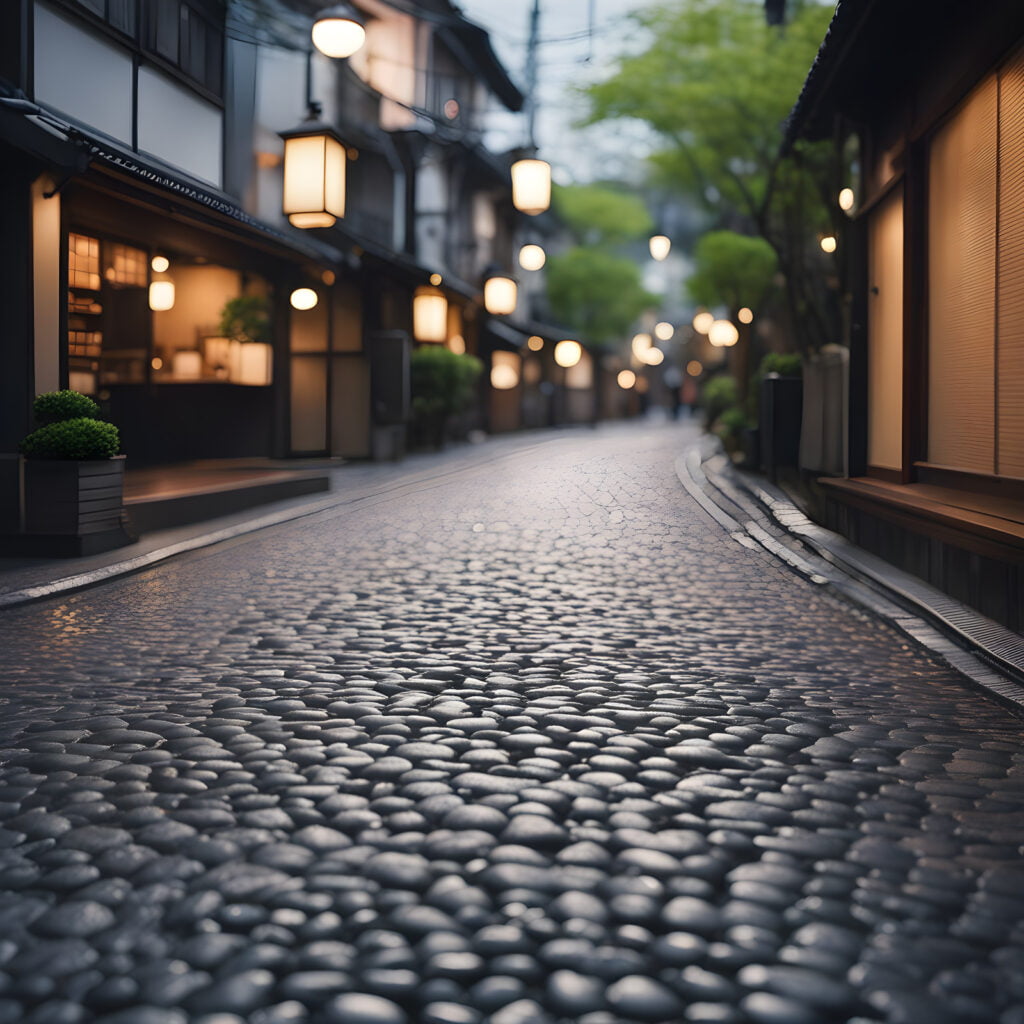
Mount Fuji & Hakone Day Tour from Tokyo
Personal Anecdotes: A Tea Ceremony Experience
Perhaps one of the most memorable moments of my stay at Kagurazaka was the chance to take part in a traditional tea ceremony. The tea master graciously led me to a lovely tea house and taught me how the ceremony was done.
The scented aroma of freshly whisked matcha wafted in as I bowed down on the hardwood floor (tatami mat). The tea master elaborated on the individual importance of every move, ranging from holding the chawan right to refined appreciation with wagashi together. An incredible peaceful and meditation moment that will be remembered for life, revealing the impressive spiritual richness of Kagurazaka to those with an open mind.
Conclusion
Tokyo in Kagurazaka was such a thing that gave me the taste of ancient and the latest Japanese culture at once. Cobblestone streets, avant-garde art, and the true spirit of Japan—this is our Kagurazaka!
Don’t forget to explore the maze of back alleyways that make up the heart and soul of Kagurazaka. You will enjoy various cuisines as you drink during your holiday at Kagurazaka. You not only taste food but also enjoy other activities such as the arts and the change of seasons in each season.
Thus, dear travelers, while designing your itinerary for Tokyo, make sure to include Kagurazaka, a locality that perfectly blends tradition and modernity in one’s tapestry of unforgettable impressions.
Wanna go to Japan? Find affordable flights here.
Wanna book a tour in Tokyo? Find tours in Tokyo here.
More from Airashi Japan
Navigating Tokyo Transportation efficiently
Tokyo Shibuya Crossing: The World’s Busiest Intersection
Japanese Temples: Senso-ji and Nakamise Shopping Street
Exploring Tokyo: Unveiling Top Attractions and Hidden Gems
Kichijoji: Unveiling the Charm of Tokyo’s Hidden Gem
Yanaka: Old-World Charm and Quaint Streets
The Mystical Allure of the Torii Gate: A Gateway to Japanese Culture
Meiji Shrine: Journeying Through Tokyos Meiji Shrine
Exploring the Heart of Tokyo: Shinjuku
Tokyo Tower: Panoramic City Views
Omoide Yokocho: Tokyo’s Nostalgic Alley of Memories
Akihabara Electric Town : Tech and Anime Haven
Roppongi Tokyo: Fusion Hub of Culture and Nightlife
Harajuku Japan: A trendsetter’s Heaven
Tokyo Autumn 2024: The Ultimate Guide to Experiencing Fall in Japan’s Capital
Nikko Autumn: A Symphony of Colors
Is Kagurazaka worth a visit?
Kagurazaka beckons with its distinctive allure, seamlessly weaving together traditional and contemporary delights.
Enchanting Ambiance: Wander along Kagurazaka’s cobblestone streets, often hailed as Tokyo’s “Little Paris,” and immerse yourself in an enchanting ambiance.
Cultural Tapestry: Delve into the tapestry of Kagurazaka’s cultural richness, where traditional and modern elements intermingle, offering a Tokyo experience like no other.
Eclectic Pursuits: Kagurazaka caters to diverse interests, from strolling tree-lined avenues to savoring local French cuisine, ensuring a tapestry of unique experiences within Tokyo.
Local Discovery: Immerse yourself in the authentic neighborhood feel, as Kagurazaka stands out as a highly recommended locale for exploring the local charm of Tokyo.
What is Kagurazaka known for?
Little Paris: Kagurazaka is known as Little Paris. You can find many French restaurants, shops, and cafes.
Geisha District: It was once a Geisha District. You can find ryotei restaurants, kimono stores, and tea houses.
Charming Atmosphere: The neighborhood has a charming atmosphere. The narrow, cobbled streets today are lined with shops, cafes, and restaurants.
Michelin-Starred Restaurants: Kagurazaka is home to several Michelin-starred restaurants.
Where is Little Paris in Tokyo?
Kagurazaka in Tokyo.
What are the alleys of Kagurazaka?
Hyogo Yokocho
Kakuren Yokocho
How do you get to Kagurazaka?
The easiest way to get to Kagurazaka is by taking the Tokyo Metro Tozai Line to Kagurazaka Station. From there, the main street is a short walk away.
Is Kagurazaka a good place to live?
Certainly, Kagurazaka stands out as a secure and welcoming neighborhood suitable for families.
What are the best places to stay in Kagurazaka?
In terms of accommodation, the area has everything, ranging from traditional Ryokans to contemporary hotels and AirBnBs, thereby providing travelers with plenty of options to choose from. Here are a few suggestions:
Kagurazaka Terrace: A hotel featuring comfortable rooms as well as a roof-top terrace.
Ryokan Sawanoya: A peek into Japanese culture through traditional ryokan.
Kagurazaka Apartment: Amenitized, spacious apartments, perfect for longer stays or families.
There is Guest House TOKYO Kagurazaka: An adorable budget guesthouse with dorrritory and single rooms.
What are the best places to eat in Kagurazaka?
Here are a few recommendations:
Le Bretagne: It is an original French restaurant that sells great crepes and galettes.
Daikonya Kagurazaka: provides innovative Japanese food using fresh market produce.
Kagurazaka Sushi Iwa: is celebrated for its top-notch sushi and omakase menus.
Take Chan: provides convenient, cheap, but delicious Japanese food.
Kagurazaka Saryo: Explore Japanese ryotei and multi-course kaiseki meals.
Wanna go to Japan? Find affordable flights here.

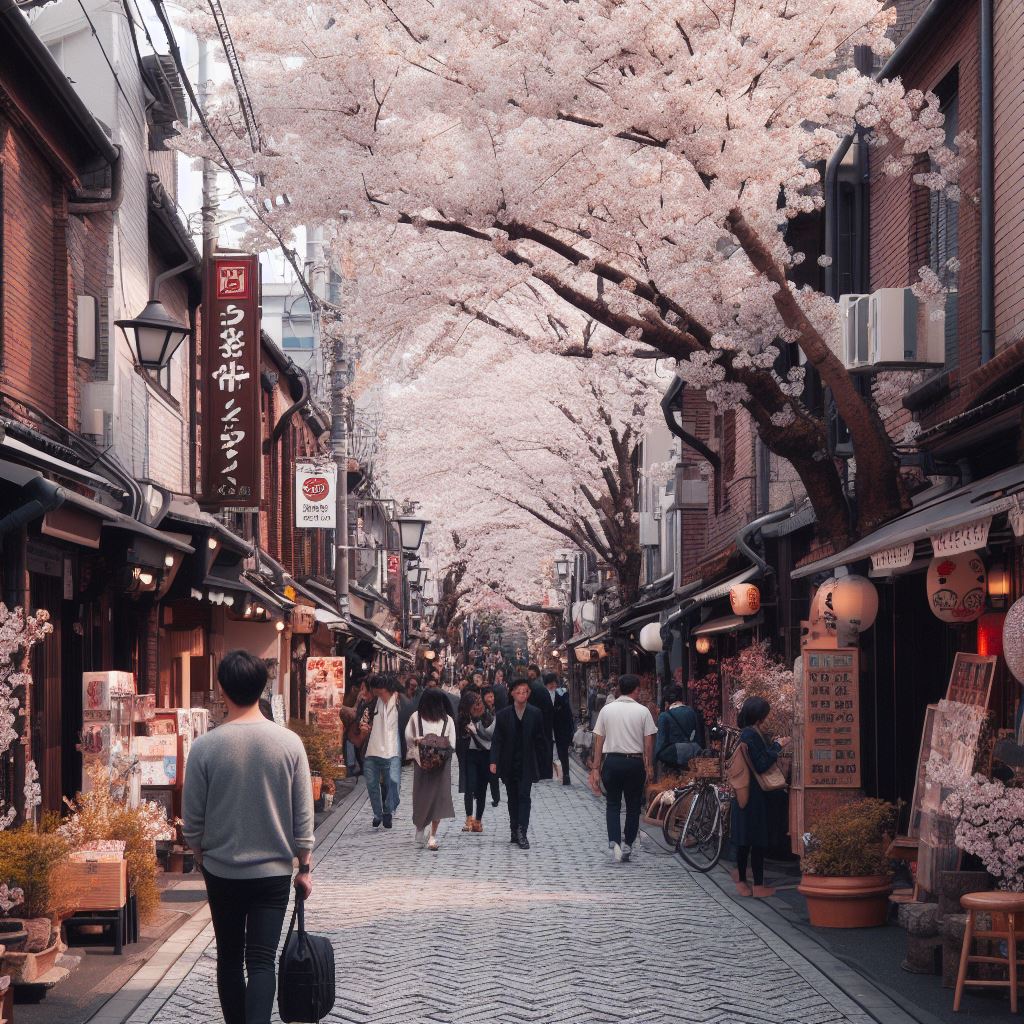
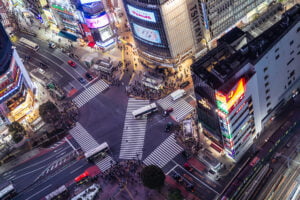
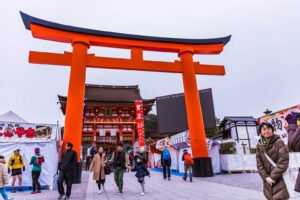

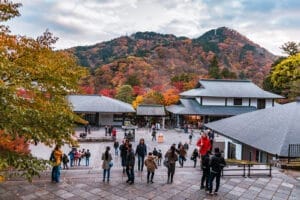
Pingback: Exploring Tokyo: Unveiling Top Attractions and Hidden Gems - airashijapan.com